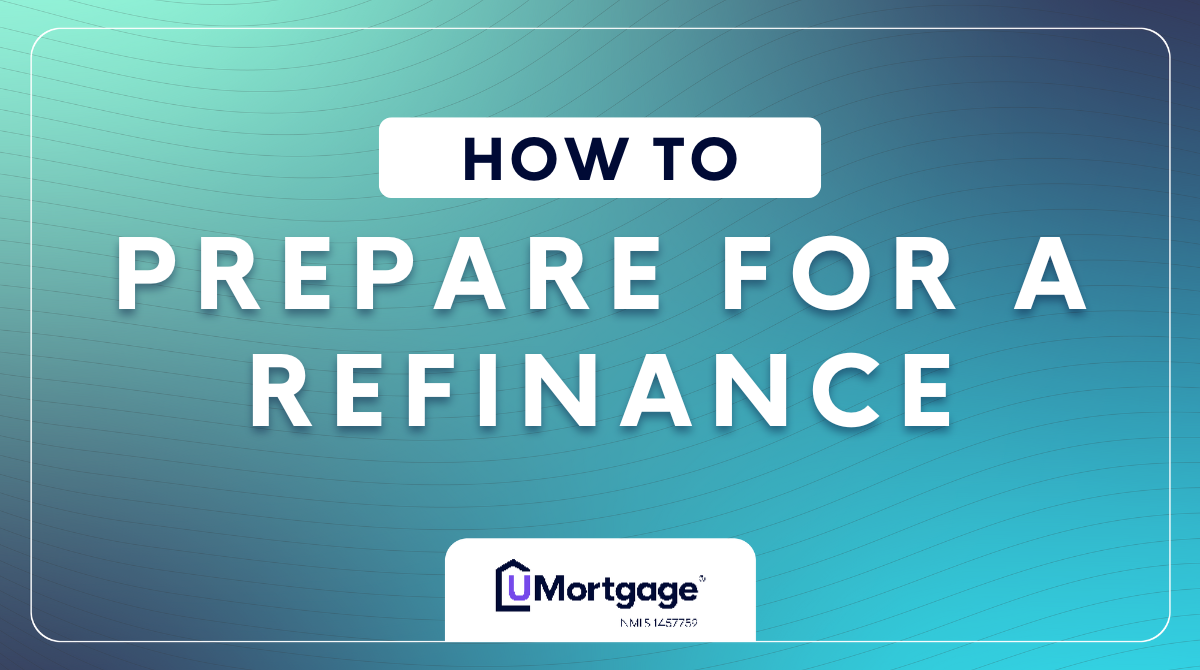5 Things You Need to Do to Prepare for a Refinance
Published: July 24, 2025
Updated: July 24, 2025

5 Things You Need to Do to Prepare for a Refinance
Refinancing your mortgage can be a smart move to improve your financial situation, but it’s not something you want to rush into unprepared. Whether your goal is to lower your interest rate, consolidate debt using your home’s equity, add/remove someone from your mortgage, or adjust your loan, setting yourself up for success starts with preparation and education.
In this guide, we’ll walk you through five key steps to help you feel confident and ready to make the most of your refinance.
Set Your Refinance Goals
There are a lot of reasons you might want to refinance, with specific programs that will help you achieve your specific goals. That’s why the most important first step of a refinance is determining why you want to refinance.
Is your goal to save money by lowering your monthly mortgage payment? Maybe you want to cash out some of your equity to pay off high-interest debt like credit cards or auto loans. Perhaps you want to use your equity to pay for a home renovation project. Or you might have an FHA loan that you want to turn into a conventional loan to get rid of your mortgage insurance premium payment. A refinance can help you achieve any of these goals.
Before you get the ball rolling on your refi, it’s important to identify those goals so you know what kind of refinance works best for you. Not entirely sure of your goals? See the top 3 reasons why homeowners choose to refinance their mortgage with UMortgage for some inspiration.
See How Much Equity You Have
If you want a conventional refinance, lenders typically require a minimum of 20% home equity. Your equity is the difference between your home’s current market value and your mortgage’s remaining principal balance. For example, if your home is appraised at $300,000 and your mortgage’s remaining principal balance is $150,000, then you have 50% or $150,000 in equity.
You can find your remaining mortgage balance on the same site where you pay your mortgage each month. For an accurate assessment of your home’s market value, you’ll need to get it appraised. Appraisals are a mandatory part of the refi process, which we’ll touch on later.
Use UMortgage’s Refinance Calculator for an estimate of your refi options.
Review Your Finances
Just like the mortgage process when you bought your home, lenders will need to review your current financial picture to determine the refinance options and loan terms that you qualify for. This includes your credit score, income, debt, and available assets.
For example, when you apply for your refinance, you’ll need to provide an up-to-date credit score. A higher score (typically 740 or higher) can unlock the most competitive rates, while a lower score might mean higher rates or more limited options.
Beyond your credit score, you’ll also want to review anything that could prevent you from qualifying. Think about things like tax liens, recent debt delinquencies, or a high debt-to-income ratio. Addressing those issues ahead of time will expedite the refi process, improve your chances of approval, and get you better terms.
You’ll also need to factor in closing costs, which typically range from 2–5% of your loan amount. You can pay these out of pocket, roll them into your new loan, or ask your UMortgage Loan Originator about a no-cost refinance.
Finally, gather all necessary documentation for your application. That includes:
- Recent pay stubs or proof of income
- W-2s or tax returns
- Bank statements
- Documentation for any large deposits or financial gifts
Having these prepared can help you navigate the refinance process more smoothly and confidently.
Connect With a UMortgage Loan Originator
The most important step in the refinance process is connecting with a mortgage expert who can help you understand your options and guide you toward the best solution for your goals. When you work with a UMortgage Loan Originator, you gain a strategic mortgage partner invested in your long-term financial well-being.
They’ll help you understand what’s possible now and what steps to take to improve your position if now isn’t the best time for you to refinance. With their support, you can feel confident knowing you're making the best decision for your financial future.
Ready for an expert’s insight? Fill out this form to get connected with a UMortgage Loan Originator in your area.
Prepare Your Home for a Refi Appraisal
Just like when you first bought your home, your refinance will require an appraisal. The appraiser’s job is to estimate your home’s current market value, which helps determine how much equity you have. That number can impact everything from the rate you’re offered to how much cash you can access if you’re doing a cash-out refinance.
While you can’t control the market or magically add square footage, you can take a few smart steps to make sure your home shines during the appraisal. Start with the basics: clean up, declutter, and take care of any small repairs you’ve been putting off. Things like chipped paint, leaky faucets, or broken fixtures can influence the appraiser’s overall impression of your home and impact your value.
Next, make sure your home is up to code when it comes to health and safety standards. Check that smoke and carbon monoxide detectors are installed & working. If the appraiser can’t verify that your home meets the necessary standards, it could delay your refinance or even affect your eligibility.
Finally, don’t be afraid to advocate for your home. If you’ve made any significant improvements (like updating your kitchen, replacing your roof, or installing new flooring), create a list to share with the appraiser. It’s a great way to ensure your upgrades are seen and factored into your home’s value.
Eager to learn more about your refi options? Click here and fill out the form with your refinance goals, and we’ll get you connected with a UMortgage Loan Originator near you who will help you get the process started.
If you want to do more independent research about the refinance process, dive deeper with our resources below!
